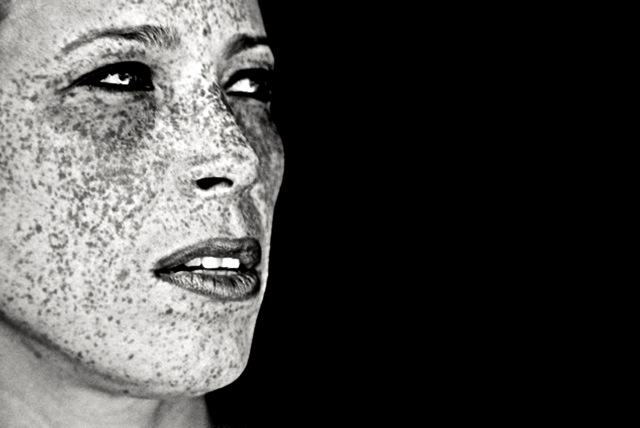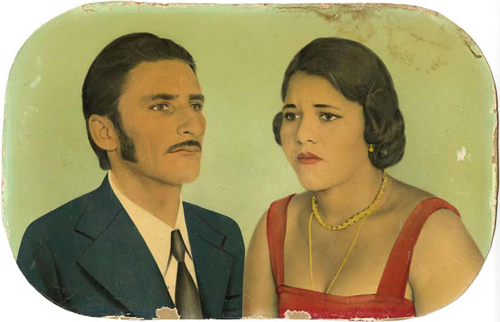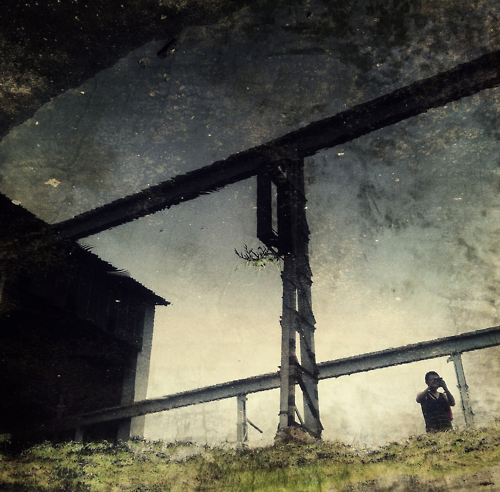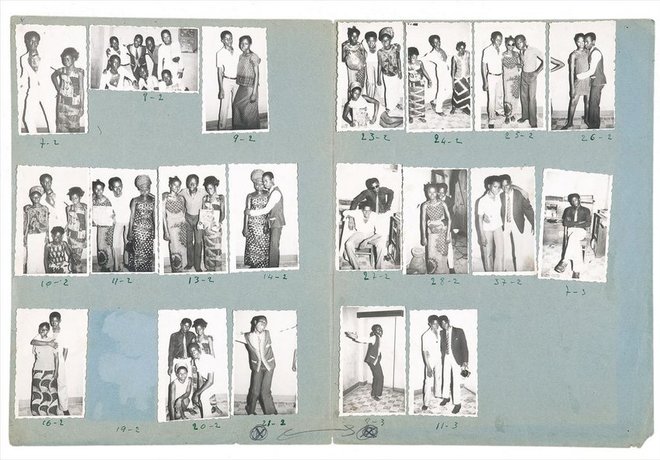
This Artweek.LA is devoted to MOPLA 2011, Adaptations and Reverberations, a celebration of music and photography in Los Angeles -- a city whose history reflects reverberations and adaptations of its own art and culture.
The Month of Photography Los Angeles (MOPLA) is the celebration of photography in Los Angeles held in April. Organized by The Lucie Foundation, MOPLA is a non-profit charitable established to advance the celebration of Photography through a variety of events and programs designed to inspire and invigorate the photography professional, enthusiast, emerging professional and collector.
This year's theme, Adaptations and Reverberations, embodies the fluidity and versatility of the photographic medium. While technology allows the art of photography to change and grow, classic approaches reverberate throughout. Utilizing old and new techniques, photographers represent a variety of subjects, including music, another art form that embraces new techniques, while incorporating and reinventing those that have come before.
Future issues of Artweek.LA will include a special section highlighting MOPLA events. For a complete calendar of events refer to the Artweek.LA calendar or the MOPLA website.

Marjorie Salvaterra | Born and raised in St. Louis, Missouri, Marjorie Salvaterra graduated from the Tisch School of the Arts at NYU and now makes her home in Los Angeles. Her interest in the theatrical began a transformation from acting to photography after playing the leading role in "The Faculty Lounge," a black and white film by the late photographer, Herb Ritts. Rekindling her early interest, she fell completely in love with photography and began her studies anew in Venice, CA.
Borrowing from her theatrical background, Marjorie Salvaterra's photographic work packs a powerful dramatic punch. Salvaterra's images have evolved into a series of luminous black and white portraits, revealing a range of emotions in her subjects. A masterful handling of light enhances the supple quality of malleable expression, reflecting the fragile human spirit. Those portrayed emerge from the dark: defiant, proud, defeated, joyous, maudlin, and elated.
Clark | Oshin Gallery launches the opening night celebration of MOPLA hosting a solo exhibition of the work of Marjorie Salvaterra, Saturday, April 2, 7-10pm at Pier 59 Studios West.

Untitled, nd, Hand-painted photograph, 10.75 x 16.75 inches. Image courtesy of RoseGallery and Titus Riedl.
Retrados Pintados | A collection of hand-painted vernacular photographs from Northeastern Brazil. Accumulated over a period of fifteen years by historian, Titus Riedl, these distinct and striking portraits represent a stunning inventory of localized Brazilian photo-painting techniques from the early 1940's through the 1990's. Unique within the history of photographic portraiture, "retratos pintados" are defined by the bold, flat fields of color that merge the reality of the original photograph with an idealized vision of the individuals and families depicted in them. Brazilian photo-painters enhanced each portrait to match the wishes of their clientele by smoothing out their skin, augmenting their hair, giving them finer clothes than they were able to afford, and by adding jewelry where none existed. In some cases deceased family members were painted as if alive, and absent loved ones were added into group portraits to create lasting mementos of complete family units. The literal truth of the black and white photograph was surrendered to a poetic and lyrical final portrait.
Continues through April 30 at RoseGallery

Aik Beng Chia, "A Shot From The Past"
Pixels: The Art of iPhone Photography | All of the photos in the exhibition were shot and processed using an iPhone camera. Unique vision along with the vast selection of photo-processing applications available on the iPhone has allowed each artist to create stunning images which reflect their true personalities. From minimal to abstract, black and white to extreme color, subtle to hard graphic, true emotion can be found in these photos.
"The iPhone IS a simple, limited, almost awful camera, which is part of its great allure for me personally. I also love the apps we use to manipulate the images. Every iphonographer has a "toolkit" of apps he or she favors. The images we see are not manipulated as those in advertisements, or fashion magazines, or playboy, to sell something, but rather to bring out the greater truth of the image for the artist - and this is where, as much as the initial shot, the artist's personality emerges. The rule for the show (and our website) is no manipulation on a computer. It is a mistake, though an easy one to make, to compare iPhontography to traditional photography. It is a new medium, which begins with the photographic process." - Curator Knox Bronson
Opening reception April 2 at the Orange County Center for Contemporary Art (OCCCA)

Malick Sidibé, Nuit du 10-10-70, 1970, collection of 20 vintage gelatin silver prints mounted on construction paper, 12 x 20 inches. (c) Malick Sidibé, courtesy of M+B
Malick Sidibé: The Eye of Bamako | The 75-year-old "Eye of Bamako's" magnificent portraits of sweeping personal and cultural changes in post-colonial Africa have been celebrated around the world. Relatively unknown outside of Mali until the mid-1990s, Malick Sidibé was the first photographer to receive the prestigious Venice Biennale's Golden Lion for Lifetime Achievement in 2007. This exhibition will include his iconic black and white photographs that recorded the history of his countrymen as well as the lesser-known "chemises", or vintage proof sheet style works on construction paper. Positioned at the junction of Malian independence and a period of rapid modernization, the works exhibited bear witness to the joy, insouciance, and confidence of Africa's youth revolution.
Sidibé's ebullient images take place in a variety of settings: either outdoors in one of Mali's newly minted nightclubs, house parties spinning the latest James Brown album, picnics on the banks of the River Niger, or indoors at Studio Malick. Regardless of setting or content, all his portraits vibrate with an energy that comes from mutual trust and collaborative effort between artist and subjects. As a privileged documentarian of tremendous cultural change, Sidibé's distinguished work is both memoir and testimony to youth culture.
Continues through April 9 at M+B

Catherine Wagner: Reparations | Wagner's latest photographic series, Reparations, documents the history of medical splints, in which she continues her examination of making a focused subject matter stand in for a greater, universal commentary of the present condition.
Displayed in total in the exhibition with deadpan, visual economy, the history of the splint forms a dual typology, one that bridges both the physical and emotional realms of human experience. The implication made by the subject's presence is clear: the treatment of bones and muscles, the healing of the body in immediate duress. Following an arc tracing prosthetic technology from its most rudimentary form (a wood shutter and rope arm splint of Arm Wrap, 2010) to its most sophisticated (the formed polymer of Wrist III, 2010), the allusion made is of a continuing violence against the body politic through history and humanism's ability to respond and move on from tragedy. They are, through there understated aesthetics, emblematic of hope.
As in Wagner's earlier series, A Narrative History of the Light Bulb, the subject matter is reduced to highlight its basic, metaphysical essence. The human body is absent from Reparations, the splints forming in their capacity an extension of their once owner's state of physical limitation. In part an allegory referencing the commonality of war images, the splints are symbolic objects attesting to the resilience of human psychology to endure. The ingenious forms of these instruments are quiet metaphors to the variety of ways one copes with society's problematic addiction to conflict - whether physically, mentally, or through the emotions.
Continues through May 14 at Gallery Luisotti